"Snyder's Gun": on the pages of books and in the museum
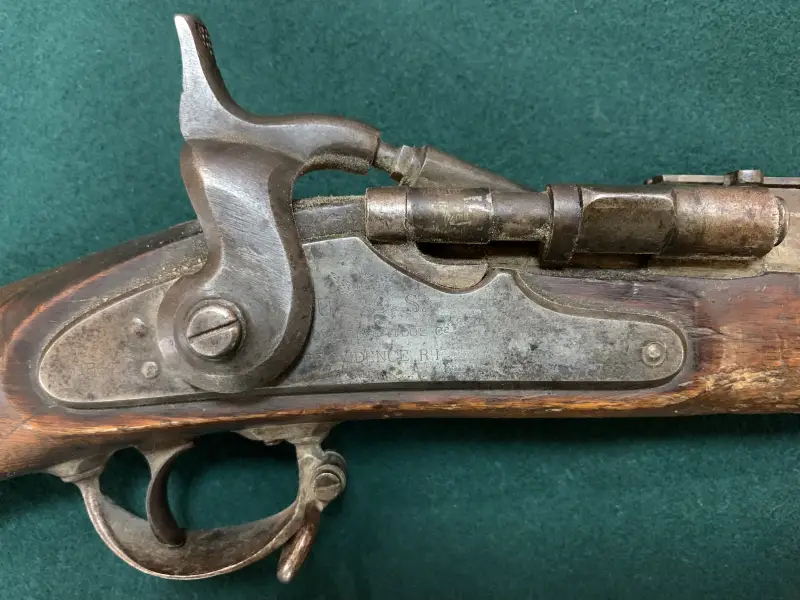
The bolt action of an 1864 Snyder rifle. The year stamped on the keyplate is clearly visible: "1864", and the name of the manufacturing company: "Providence Tool Manufacturers", Providence, Rhode Island, USA. Penza Regional Museum of Local Lore. Author's photo
"Jerry the Islander" Jack London
People and weapon. One of my favorite children's books was Jerry the Islander, published in 1960, with a very striking black and yellow cover and black and white illustrations. I received it before school, and my mother read it to me, and as usual, I was sick and, lying down with a high fever, imagined what I read. For some reason, I was especially impressed by the native pies inlaid with mother-of-pearl (probably because we had a Chinese box inlaid with mother-of-pearl at home), and ... “Snyder guns,” from which the cannibalistic natives aimed at the whites, pressing the butt to their stomachs.
In one of the illustrations, just such a native with a gun was depicted, but for some reason the bolt of the gun was clearly missing, and it was not clear how the “Snyder guns” differed from all the others.
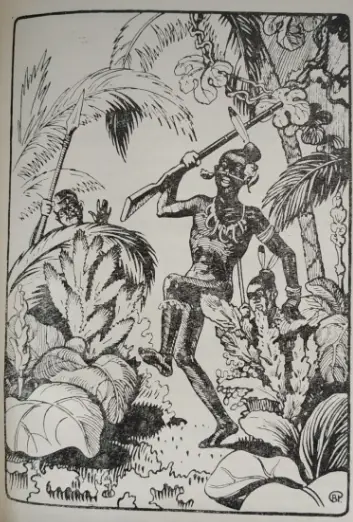
This is the illustration that struck my fragile childhood consciousness to the core...
And, of course, I wanted to see this very “Snyder gun” and hold it in my hands. But it turned out to be possible to do this only now, more than 60 years after those ancient events. Well, what kind of gun was it and what trace did it leave? stories firearms?
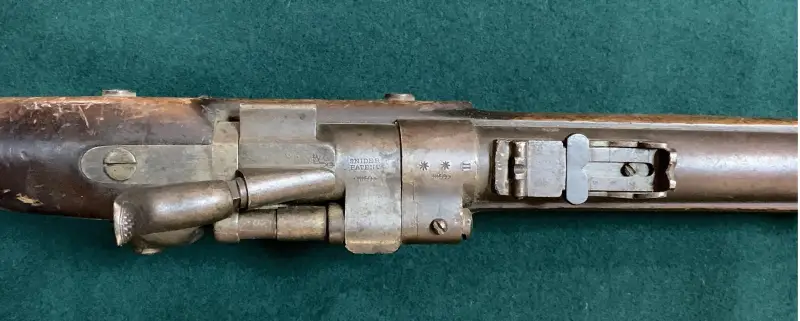
The bolt of a Snyder rifle made in the USA in 1868. Top view. The inscription “Snyder patent” is clearly visible. Penza Regional Museum of Local Lore. Author's photo
And it so happened that Prussia, using the Dreyse needle rifle, managed to inflict a quick and decisive defeat on its opponents in the Austro-Prussian-Danish War of 1864 and in the Austro-Prussian-Italian War of 1866. All this prompted the British to start re-equipping their army with new small arms and start testing samples that met the new requirements.
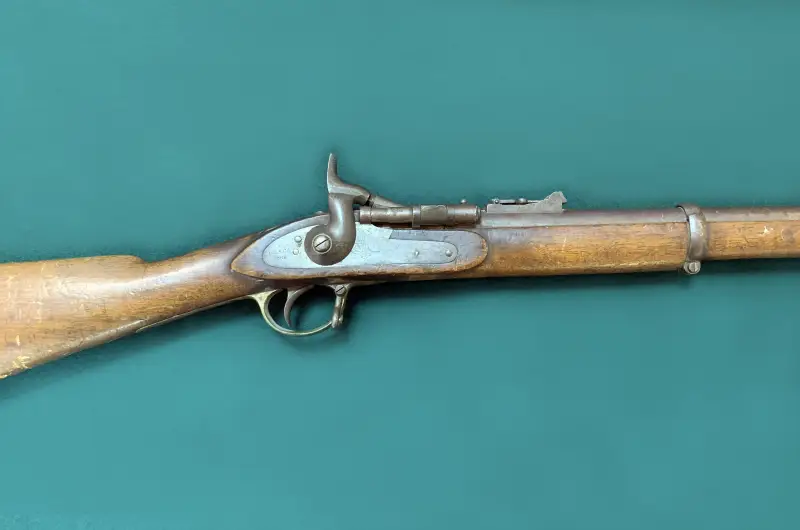
The bolt of a Snyder rifle made in the USA in 1868. Penza Regional Museum of Local Lore. Author's photo
The main requirement of the British military was... savings! That is, they needed a design for a new rifle that would allow them to quickly and cheaply convert the old muzzle-loading Enfields of the 1853 model into cartridge rifles loaded from the breech.
And then the American engineer Jacob Snyder offered his development to the British. His rifle was tested, and it turned out that it allowed the infantryman to fire ten shots per minute instead of the previous three. And the conversion of old rifles into new ones did not present any difficulties. That is why in 1866 the Snyder rifle was adopted by the British army. That same year, the Royal Armories began remaking old guns, but they retained their original barrel, stock, lock and hammer. At the same time, the rifle was called “Snyder-Enfield” after the name of the manufacturer’s British arsenal.
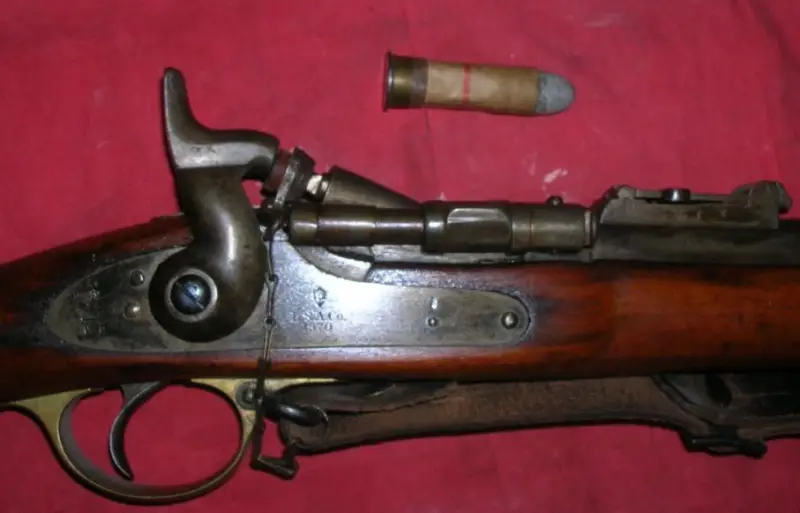
Snyder rifle bolt, .577 caliber. The rifle is manufactured by LSACo. ("London Small Arms") in 1870. Above is the original Snyder cartridge. Photography by Allen Dobress
The total length of the British-made rifle of 1866 was 124 cm. Barrel length 75,3 cm. Caliber: 14,7 mm. The rifle had a so-called folding bolt, which folded to the right. At the same time, by pressing the folded bolt “towards himself,” the shooter activated the extractor, which pushed the cartridge case out of the chamber. Then it was pulled out with your fingers and thrown out, which was not entirely convenient. However, the main thing in this case was the low cost of converting a large number of muzzle-loading weapons.
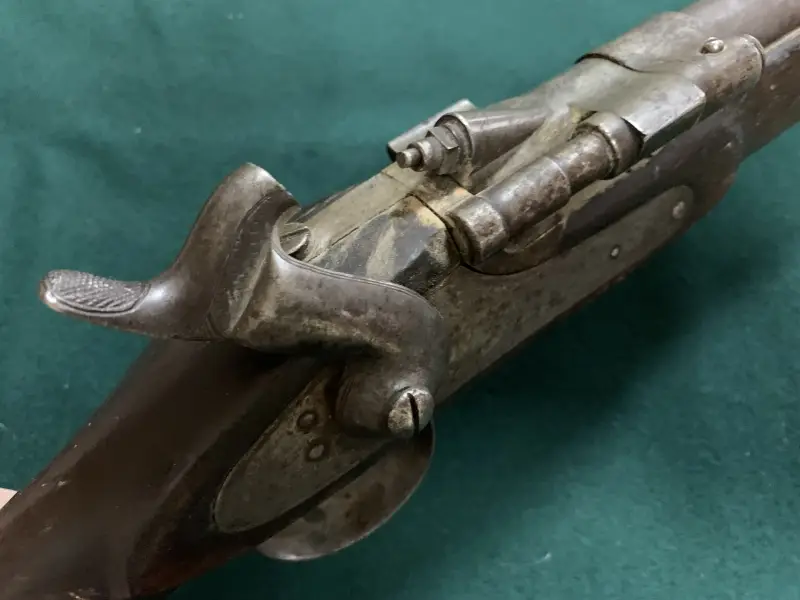
The bolt of a Snyder-Enfield rifle. Back view. Penza Regional Museum of Local Lore. Author's photo
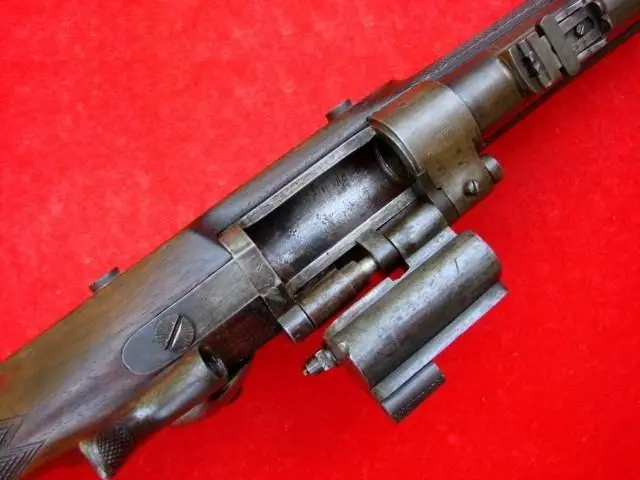
The bolt of the Snyder-Enfield rifle is open. View from above. Photography by Allen Dobress
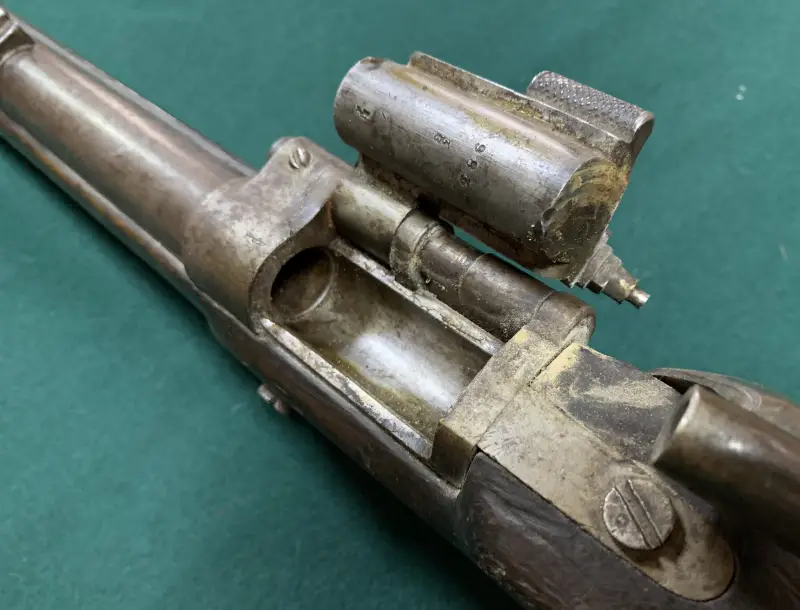
The bolt of the Snyder-Enfield rifle is open. Left view. Author's photo
The new rifle used a unitary cartridge with a central ignition system of the Eduard Boxer system.
Already in 1868, the Snyder-Enfield rifle demonstrated its effectiveness in Abyssinia, where a detachment of British soldiers numbering 300-400 people was attacked by Abyssinians with a total number of about 7000 soldiers. Colonel Cameron, the detachment commander, knowing that the effectiveness of his detachment's rifle fire began at a distance of 500 yards (approx. 457 m), decided to let the attackers come to 250 yards in order to hit for sure:
True, the first salvo did not stop the Abyssinians, but the British fired quickly at them and, firing 30-40 bullets per second, eventually caused panic among them.
However, the shortcomings of the extraction of spent cartridges led to the fact that in 1871 the “Snyder guns” were removed from the arsenal of the imperial troops and transferred to the colonies, and their place was taken by the Martini-Henry rifles. But... “Snyder-Enfield” did not disappear from the arena, but was used by the same British Indian Army until the very end of the XNUMXth century, and in the British mandated territories in the Pacific Ocean they served even longer.
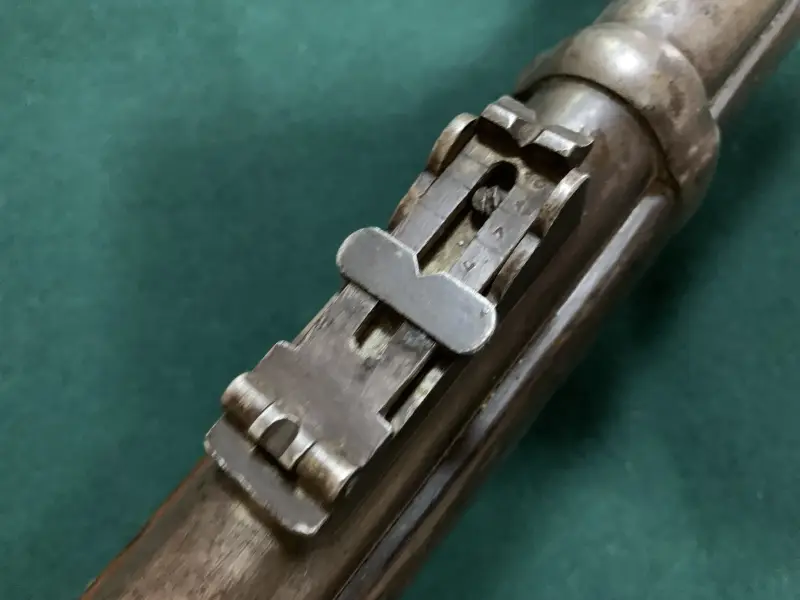
Snyder rifle sight 1868. Penza Regional Museum of Local Lore. Author's photo
The convenience of installing a folding bolt (in France it was called a “snuffbox”, by analogy with the lid of a snuffbox) on old muzzle-loading rifles was appreciated not only in England, but also in France, where the Schneider company was privately entrusted with the conversion of old muzzle-loading rifles, while while state enterprises were producing Chasspo rifles. These rifles were more progressive in the sense that they had a sliding bolt, but they had to be made anew, and they could not fire centerfire cartridges with a metal sleeve.
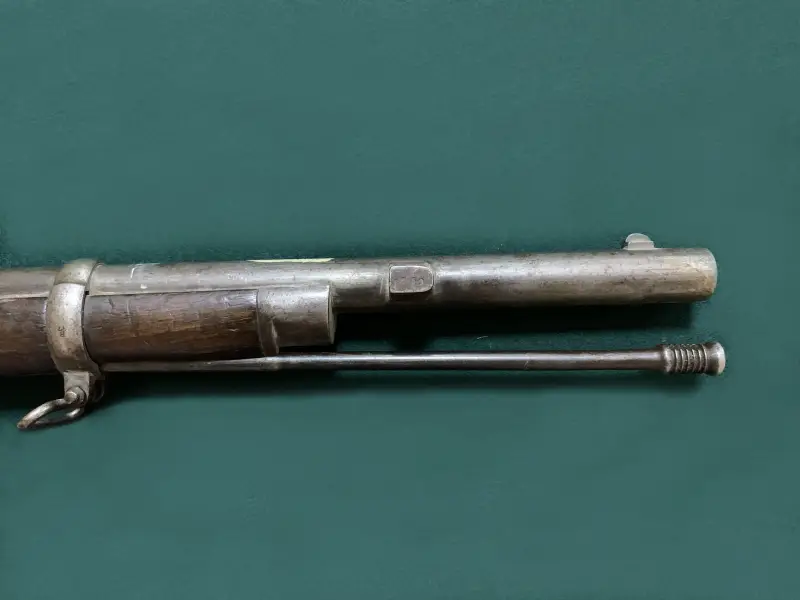
Snyder rifle barrel with a lug for mounting a bayonet. Author's photo
Maintaining a large caliber (17,8 mm) worsened the ballistics of the conversion rifles, in which they were much inferior to the Chassepot rifles. As a result, the French army ended up with two types of rifles at once - Chassepot and Snyder-Schneider, which did not have the best effect on the preparation of the French army for the upcoming war. But when it did begin—we are talking about the Franco-Prussian War—then 358 “snuff” rifles were immediately sent to the front.
This partly made it possible to solve the problem with arming the army, but “snuff boxes” were not popular among French soldiers. The Germans, who defeated France, had absolutely no need for such “trophies”, and they were a burden to the French themselves. Therefore, they were sold to Africans, where they were called “Zulu guns” and repeated the fate of the British “Snyder guns”, which ended their career in the colonies in the Pacific Ocean.
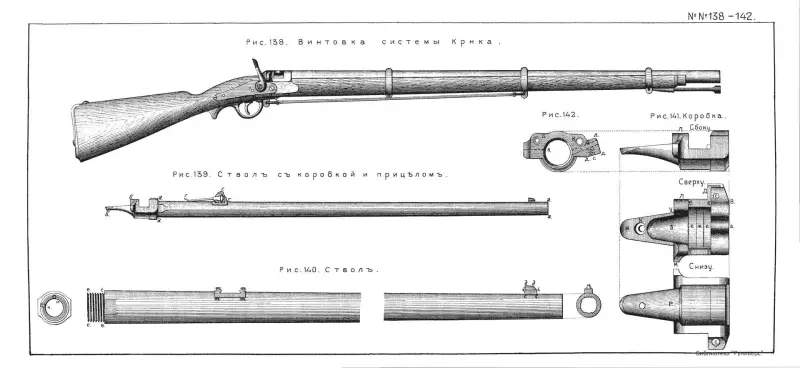
Krnka rifle. V. G. Fedorov. “Atlas of drawings for the Armament of the Russian Army for the 19th century”
In Russia, they also paid “tribute” to the conversion of bolt-action rifles. In 1869, a 15,24 mm caliber rifle from the Czech Sylvester Krnka entered service with the Russian Imperial Army. The peculiarity of the bolt of this rifle was that it opened from right to left, that is, counterclockwise when viewed from the butt. Moreover, its extractor was more advanced than that of the Snyder rifle. He not only pushed the cartridge case out of the chamber, but also threw it through a chute made in the receiver.
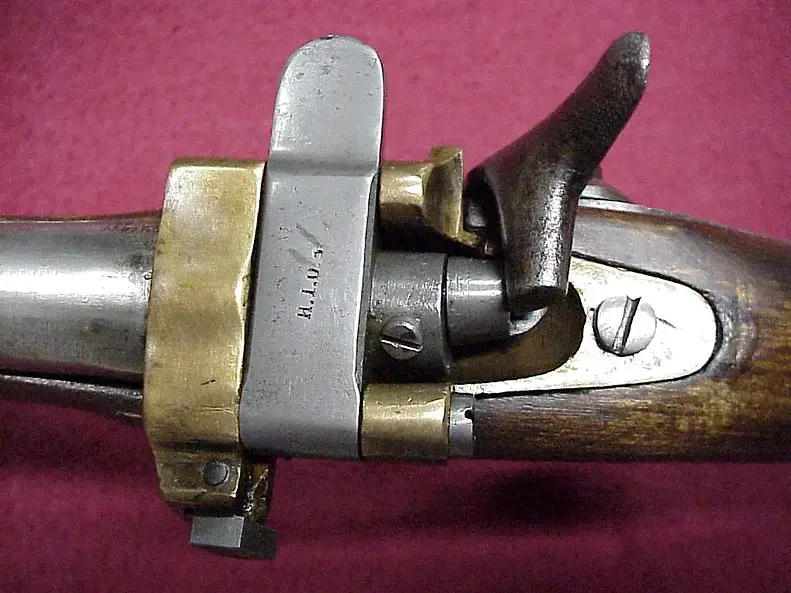
The bolt of the Krnka rifle is closed. Photo by Ilya Stanislevik from Keith Dawn's material. https://www.militaryrifles.com/russia/krnka
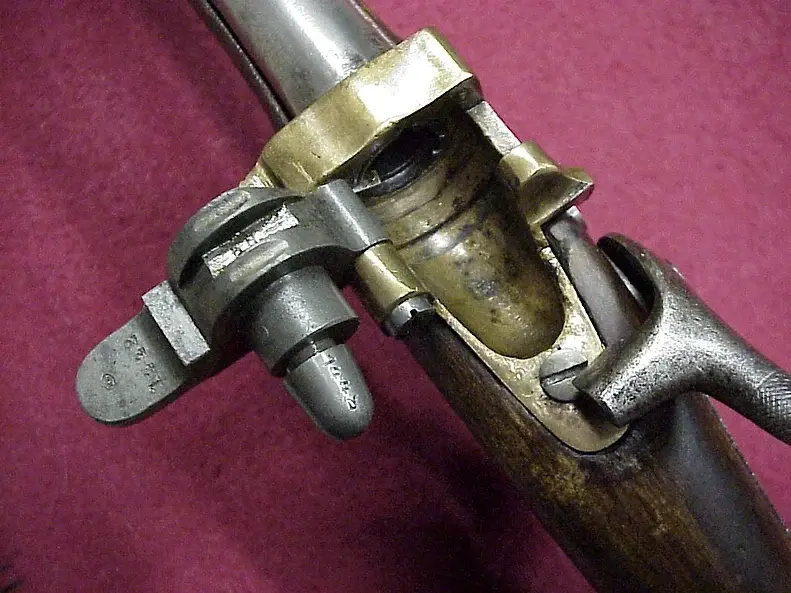
The bolt of the Krnka rifle is open. Photo by Ilya Stanislevik from Keith Dawn's material. https://www.militaryrifles.com/russia/krnka
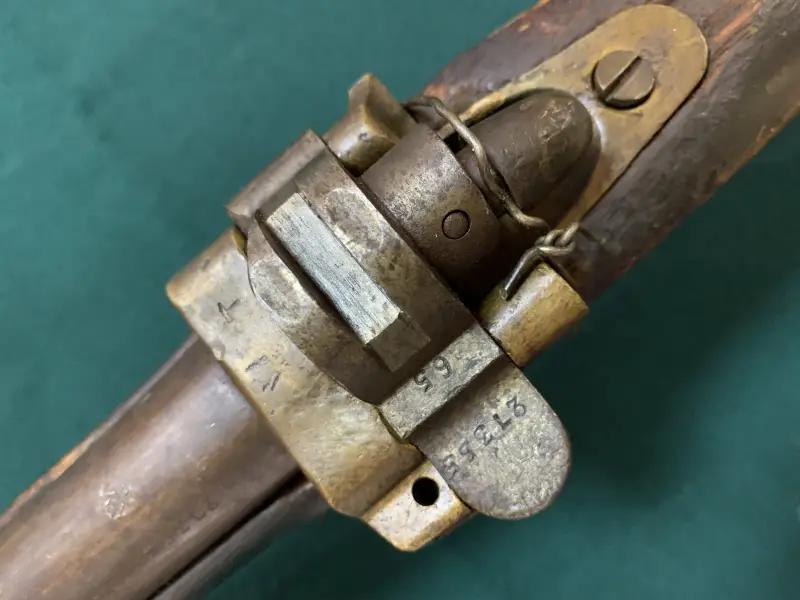
Now look at the photo of the bolt of this rifle from the Penza Museum of Local Lore. Alas, not only is there no trigger, but the shutter itself is assembled incorrectly, which is clearly noticeable if you look closely at the previous photos. Such incidents happen in our museums... And even in the most famous ones both in the country and in the world! Photo by the author
To achieve this action of the shutter, it was prescribed to open it with a sharp blow of the palm of the hand on the handle located on the right. However, this effect was observed only in new guns with well-fitting bolts. Shotguns with worn or dirty breech blocks had problems with extraction exactly the same as “Snyder shotguns”, no matter which side the breech was opened from – be it on the left or on the right!
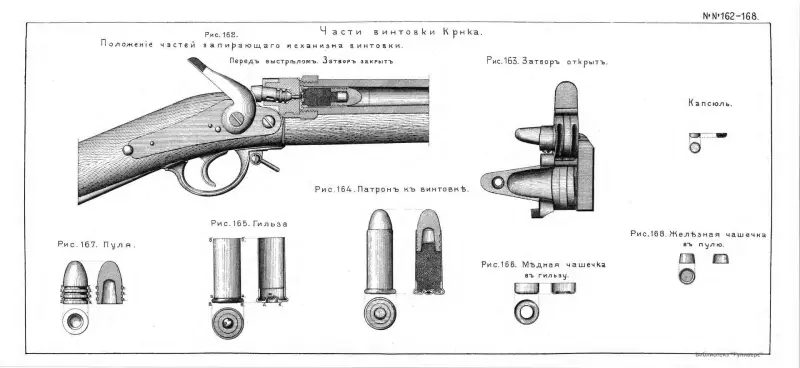
Krnka rifle. V. G. Fedorov. “Atlas of drawings for the Armament of the Russian Army for the 19th century”
Information